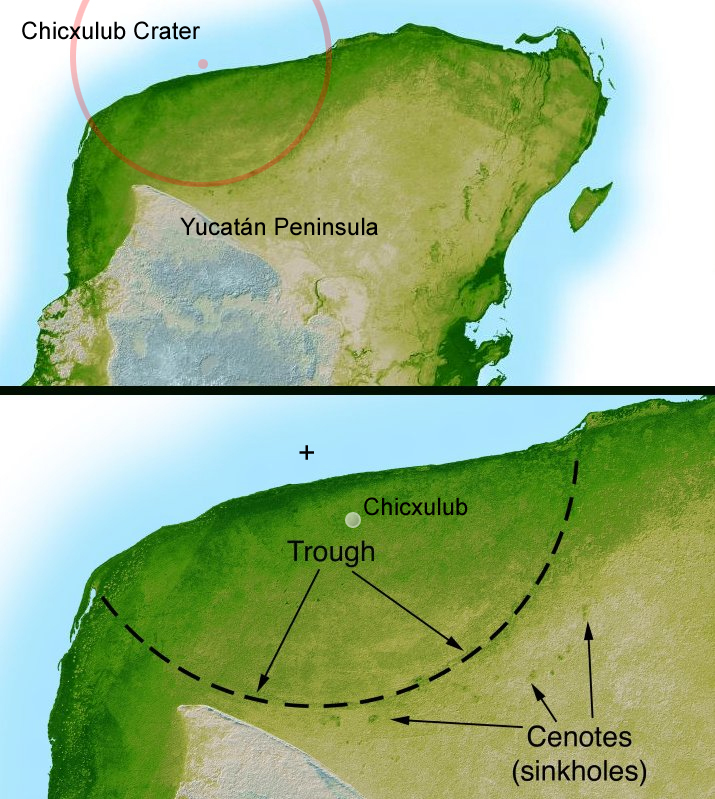
The single messiest day in geologically recorded history was the day the dinosaurs died. On that day, and across the days that would follow, tidal waves wrapped multiple times around our world as first a primary impactor hit our world, and then as the rocks it threw into the air rained back down in an atmosphere baking rain of destruction.
One of the main reasons we know about that one really messy day is a strange layer of iridium and other elements that separates the layers of rocks containing a diversity of dinosaurs, and the layers that came after. This layer of material – the K-Pg Boundary – wasn’t made of material from our world. 44 years ago Luis and Walter Alvarez posited that this iridium layer was associated with an asteroid impact, and we now know it was from a 10-15 km across asteroid hitting the Yucatan peninsula 66 million years ago, forming what is now called the Chicxulub crater. And, thanks to a new article in Science magazine, we now know that asteroid came from the outer solar system.
The origin of the Chicxulub crater and other craters were determined by a team led by Mario Fischer-Gödde. He and her colleagues collected samples from the K-Pg boundary and measured high levels of platinum-group elements like iridium, ruthenium, osmium, rhodium, platinum, and palladium. These elements are rare on earth and much more common in asteroids. Further, since different parts of our solar system allowed objects with different compositions to form, they knew the ruthenium isotopes they found are consistent with the impactor being a C-type asteroid that formed in the outer solar system.
This work appears in the journal Science.
The team’s research was also able to show that 5 other impact sites were formed from stony S-type asteroids from the inner solar system.
I am now interested to see this work carried out with more craters. There are about 200 known impact craters on Earth and I’d love to know what parts of the solar system have attacked us over time. In addition to just being neat, this kind of information will both inform future risks, and help us understand where the materials that shaped our world have come from overtime.
A whole lot of time in astronomy and space science is spent going, “Huh, that’s weird” and then trying to figure out what that weird thing is. From spotting and decoding a weird layer of iridium in the landscape to spotting and trying to make sense of weird things in the sky, our job is to uncover the evidence that leads us to the truth behind every weird thing in our data.
